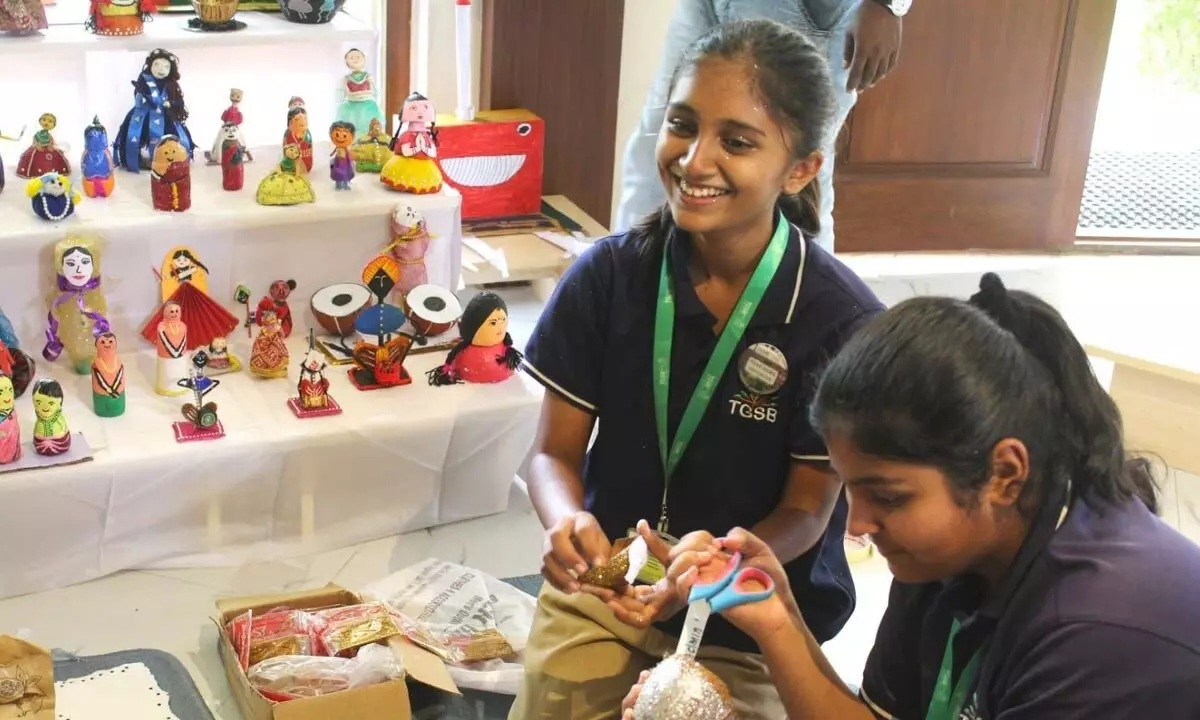Students create traditional dolls from waste

As Navaratri and Dussera approach, many traditional households in Karnataka prepare for the age-old practice of the Gombegalu (doll) display.
Bengaluru: As Navaratri and Dussera approach, many traditional households in Karnataka prepare for the age-old practice of the Gombegalu (doll) display. This cherished tradition, celebrated during Dussera, features an artistic arrangement of intricately crafted dolls on steps, symbolizing the triumph of good over evil and the celebration of life.
At The Green School Bangalore (TGSB), students decided to honor this tradition in a creative and eco-conscious way. The young learners crafted their own Gombegalu dolls by hand, using recycled materials and waste they had collected over the past few months. Items like coconut shells, cardboard, dried flowers, carton rolls, old fabrics, clay, ice cream sticks, and decorative pearls were gathered from their neighborhoods and transformed into beautiful, meaningful dolls.
This eco-friendly initiative showcased the ingenuity of young minds and paid homage to the rich cultural heritage of South India. Usha Iyer, Founder & Principal of TGSB, shared, “Students of class 3 to 9 in our school have been collecting waste plastic bottles, coconut shells, milk bottles, etc., from their neighborhoods for the past few months. Each student has been crafting unique mythological dolls and everyday characters out of these waste materials.”
Each doll told a unique story, depicting mythological figures or everyday characters, imbuing the exhibit with rich folkloric elements. The use of recycled materials also highlighted the importance of sustainability—a powerful reminder of today’s environmental challenges.
Among the many creations were a Ravana with ten heads crafted from waste plywood and rubber, and dolls representing Seeta, Rama, Laxmana, Hanuman, and classical dancers made from plastic bottles. Even musical instruments and deities like Vishnu on Sesh Nag and baby Krishna were intricately made using coconut shells, bringing together tradition, creativity, and environmental consciousness in a truly remarkable display.

















